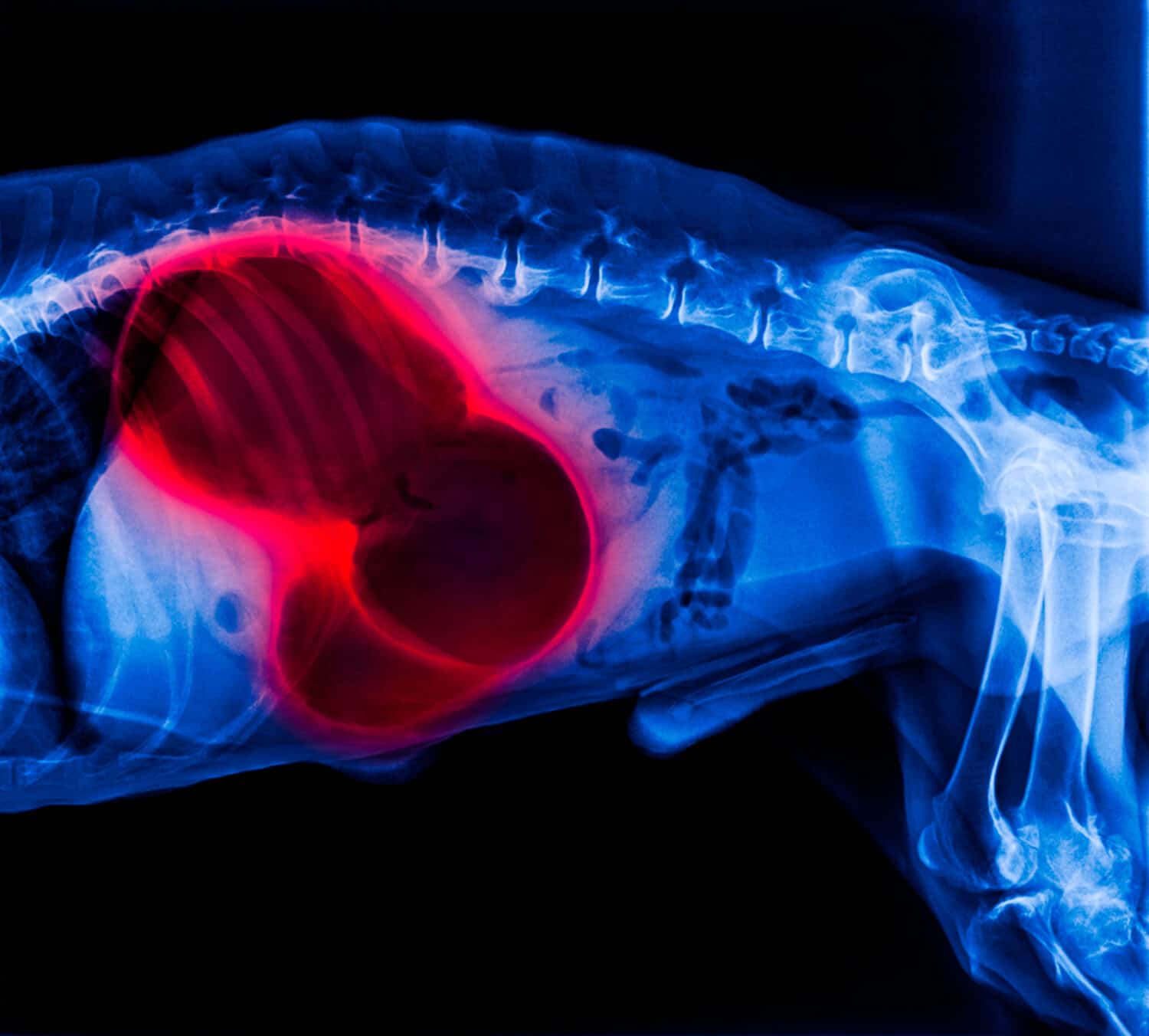Is your dog throwing up white foam? While it can be unnerving at first, usually, you can figure out the underlying issue quickly and provide the necessary remedy. As dog owners, we understand the importance of regular health monitoring to keep our furry friends happy and healthy. There may be times when unexpected symptoms throw us off, causing concern and confusion.
One such symptom is when our dogs begin throwing up white foam. This post seeks to dive deeper into the reasons behind this unsettling phenomenon, other warning signs to watch out for, potential home remedies, and appropriate veterinary treatments. You’ll also learn about preventative measures to keep your furry companion healthy. But first;
What’s White Foamy Vomit?
Dogs frequently vomit a white foamy fluid that has a bubbly, frothy appearance. It could have a foamy texture that resembles whipped egg whites or a cappuccino’s foam. The foam’s hue might range from a translucent white to one with a faintly yellowish tint. Additionally, it occasionally might have streaks of clear or yellowish liquid in it.
The frothy vomit is often attributed to extra gas and gastric secretions in the stomach that mix up to form a bubbly, foam-like liquid that the dog throws up. It may also result from respiratory tract infections that cause a liquid buildup mixed with air, creating a white, foamy vomit.
While white foamy vomit itself isn’t a specific diagnosis, understanding its appearance and consistency can help you better explain your dog’s condition to the veterinary doctor for further investigation of the underlying issues.
Why Is Your Dog Throwing Up White Foam?
There are multiple reasons for your dog vomiting or regurgitating white foam. It may be a one-time incident related to indigestion or a symptom of a serious health condition such as bloat or kidney disease. Here’s a detailed breakdown of the potential causes of dogs throwing up white foam:
1. Indigestion
Digestive issues are often the most common culprit for a dog throwing up white foam. Indigestion may stem from two critical issues, overeating and abrupt changes in the diet. Your dog may overindulge in the food portions or treats given. Overeating may overwhelm the stomach leading to discomfort, with your furry companion vomiting white foam to ease the irritation.
Furthermore, excess food intake can cause stomach distension, which puts more pressure on the lower esophageal sphincter and increases the risk of gut reflux. Changing your dog’s meal plan can disrupt the digestive system, leading to irritation and white foam forming from the mouth.
The dog can take extreme measures by eating grass to induce vomiting. A dog throwing up white foam due to indigestion may require urgent medical care to establish the underlying cause of the stomach upset.

A concerned pup reflecting discomfort, highlighting the challenges of indigestion in dogs.
©Vitaly Titov/Shutterstock.com
2. Acid Reflux
Bilious vomiting syndrome is a condition where dogs vomit due to bile-induced stomach inflammation. It is the canine equivalent of acid reflux, also identified as reflux gastritis syndrome or duodenal-gastric reflux.
Dogs with bilious vomiting syndrome vomit a yellow-looking fluid (bile) or white froth after not eating for a long time; this occurs in the morning for most dogs after not eating the previous night. Other symptoms of a dog with acid reflux include reduced interest in food, smacking lips, drooling, or obvious nausea.
You may consult a veterinarian to rule out other causes of vomiting in your dog. Treatments for bilious vomiting syndrome vary, including anti acid therapy, a special feeding regimen, and a diet change.

A dog with acid reflux may show signs of a reduced interest in food, smacking lips, drooling, or obvious nausea.
©Zontica/Shutterstock.com
3. Kennel Cough
Kennel cough, or canine infectious tracheobronchitis, is a highly contagious disease that causes bronchitis in dogs. It is caused by a complex of infectious bacteria and viruses in areas where many dogs congregate. These include dog boarding facilities, training groups, dog parks, pet shelters, doggy daycares, and pet shows.
Dogs infected with kennel cough often have trouble breathing, a strong cough with a “honking” sound and white foam, a nasal discharge, a running nose, and reduced appetite. Typically, mild cases of the disease are treated with one or two weeks of rest, clearing up without treatment within a few weeks.
A trip to the veterinarian is recommended, as kennel cough can be an early sign of more severe conditions, such as collapsing trachea. Luckily, a vaccine against the Bordetella bacterium, the most common cause of kennel cough, is available.

Dogs infected with kennel cough often have trouble breathing and a strong cough with a “honking” sound.
©Grisha Bruev/Shutterstock.com
4. Gastric Dilation and Volvulus/Bloat
Gastric dilation and volvulus or bloat is a serious medical condition in which a dog’s stomach fills with gas, fluid, or food and twists. Bloat is fatal if left untreated.
The air buildup in the stomach results in a pressure buildup that stops blood from the hind legs from returning, reducing blood volume and eventually sending the dog into shock.
Common signs of bloat include an enlarged abdomen, salivation, frothy white vomit, restlessness, and retching. An urgent surgical intervention is necessary to deflate the stomach, return it to its correct position, and tack it to the abdominal wall.

Gastric dilation and volvulus or bloat is a serious medical condition in which a dog’s stomach fills with gas, fluid, or food and twists.
©Intarapong/Shutterstock.com
5. Foreign Body Obstruction
Dogs are notorious for swallowing paper, tissues, clothing, sand, food wrappers, rocks, bones, and other foreign objects. Some of these things pass through the digestive system without a problem. It isn’t uncommon for pet parents to find items in their dog’s poo or vomit.
Sadly, foreign body obstruction is among the most common and potentially fatal medical emergencies reported at veterinary centers. Surgical intervention may be the only way to remove objects stuck in the gut.
White foam vomit is a common sign among dogs that have ingested foreign objects. Other symptoms include diarrhea, abdominal tenderness, lethargy, straining to defecate, and decreased appetite.

Foreign body obstruction is among the most common and potentially fatal medical emergencies reported at veterinary centers.
©Yavdat/Shutterstock.com
6. Kidney Disease
A healthy kidney is critical to detoxification, regulation of hydration, and maintaining the right electrolyte balance in dogs. Renal failure or kidney disease is a progressive degeneration of the kidney tissues, resulting in the inability to perform the listed functions effectively.
A dog throwing up white foam, increased water consumption, lethargy, significant loss of appetite, and blood in the urine are common signs of kidney failure. Renal disease can be acute with a sudden loss of function or chronic, where the degeneration occurs over time.
Your veterinarian may need blood and urine tests to confirm the renal disease diagnosis. The severity of the symptoms may determine the appropriate therapy, including IV fluids, dialysis, or a kidney transplant.

A dog throwing up white foam, increased water consumption, lethargy, significant loss of appetite, and blood in the urine are common signs of kidney failure.
©sutipong/Shutterstock.com
7. Consumed Toxins
Your dog may rummage through your trash, kitchen, or yard and ingest toxic chemicals that pose a danger. Some of these harmful substances are easily accessible from your kitchen or pantry, such as chocolate, grapes, or dough. Your dog may also ingest wrongfully placed bathroom and garage products such as bleach, cleaning products, antifreeze, insecticides, or vanish.
Ingesting these toxins may result in irritation that leads to vomiting, sometimes appearing as white frothing. Your pup may also present an array of other signs, such as extreme salivation, lethargy, or bleeding gums, depending on the specific toxin.
An intoxicated dog requires immediate veterinary attention. You may need to correctly identify the product it ate or drank to get the correct administration of antidotes, IV fluids, and supportive therapy.

Ingesting harmful substances may result in irritation that leads to vomiting, sometimes appearing as white frothing.
©MPH Photos/Shutterstock.com
8. Internal parasites
Dogs with intestinal parasites, such as heartworms or lungworms, can cough up some white foam with such strong force that it is easily mistakable for vomit. Other parasites that live within the gut as adults can migrate through the airways as larvae, eliciting the same reaction.
The parasites can also cause the dog to be nauseous, vomiting the worms. It’s essential to note that heartworm disease can be fatal if left untreated. You can control the risk of internal parasites by regularly deworming your dog. Regular veterinary checkups can also help identify the parasite problem before it gets out of hand.

Dogs with intestinal parasites such as worms can cough up some white foam.
©Cheevarut/Shutterstock.com
9. Fungal Infections
Your dog may come across droppings from other animals and decide to consume them. While some may be harmless, others carry potentially catastrophic risks. An example is bird or bat droppings that carry fungal spores. Once the pup feasts on the poop, the fungus triggers infections that have a similar clinical manifestation to a stomach upset.
Your dog may throw up white foam, or suffer from diarrhea, itchiness, poor appetite, weight loss, bloody nasal discharge, and muscle wasting. Treatment and management of fungal infections may involve IV fluid therapy, a bland diet, antifungals, and antibiotics.
10. Pancreatitis
Pancreatitis is a painful condition characterized by the inflammation of the dog’s pancreas. It can be acute or chronic, resulting in severe abdominal pain, vomiting, and inappetence. The rash is caused by the early activation of digestive enzymes, inflaming and damaging the pancreatic cells.
A dog with pancreatitis shows clear signs of abdominal discomfort, such as severe diarrhea, weight loss, loss of appetite, and vomiting. The inflammation may affect other body systems, resulting in life-threatening complications.
There’s no specific therapy for canine pancreatitis, though most veterinarians will prescribe drugs to help ease the symptoms. These may include pain control meds, antinausea medications, IV electrolyte support, and other supportive therapies.

A dog with pancreatitis shows clear signs of abdominal discomfort, such as severe diarrhea, weight loss, loss of appetite, and vomiting.
©Beach Creatives/Shutterstock.com
What To Do If Your Dog Throws Up White Foam
There are multiple causes of vomiting white foam in dogs, some as simple as intestinal discomfort and others being life-threatening conditions. Treating the dog’s vomiting depends on identifying the correct cause. In most instances, veterinary intervention is needed. If your dog faced an isolated episode of white foam vomit without other symptoms, such as diarrhea or loss of appetite, try some home therapy treatments before seeking veterinary care.
How Can You Treat A Dog Throwing Up White Foam At Home?
There’s no need for an immediate cause of alarm if your dog vomits once. The most appropriate measure would be withholding food and water for twelve hours. The break gives the stomach time to settle.
You can offer food to your furry roommate after this fasting period is over and observe their behavior. You may not have to worry if they still have their appetite and eat as usual. However, if your dog isn’t interested in the meal and water or vomits again within twenty hours, it may be time to see a doctor.
Other home remedies for a dog throwing up white foam include:
- Request the over-the-counter drug Pepto-Bismol from your veterinarian. Take note that it’s not fit for dogs with aspirin allergies.
- Add honey to its food.
- Use dog-specific probiotic supplements or foods to support a healthy gut flora.
- Try slippery elm supplements formulated for dogs.
- Consult with your veterinarian before using peppermint.
Watch your dog closely for other symptoms that may signify illness, especially those associated with bloat. Dogs suffering from bloat will often produce a small amount of white foam vomit, which may make you think it’s nothing serious. You may also need to call the veterinarian if your pup experiences intermittent vomiting for over a day.
Treatment For A Dog Vomiting White Foam At A Vet Clinic
Your vet will conduct an extensive physical exam. They may request your dog’s medical history. Be detailed and carry medical files and charts. Mention the dietary supplements they take and any recent changes you’ve noticed in their health. Include any information about products or items you suspect the dog may have ingested.
Your vet clinic may suggest further diagnostic testing, including blood work, fecal and urine testing, and radiographs. The veterinarian may request additional tests if they suspect bloat, obstruction, or chemical toxicity.
Specific treatment depends entirely on the cause. Mild cases may only require antinausea treatment to avoid further vomiting. You may have to leave your doggo at the pet hospital for additional monitoring. Dogs showing dehydration, pancreatitis symptoms, and kidney disease may require hospitalization for longer periods.
A gut obstruction or bloat diagnosis may require urgent surgical intervention. You may enjoy a same-day or next-day discharge if it’s a simple case of indigestion. You can help your dog recover by providing lots of water while withholding treats and large meals. A prescription-based bland diet is highly recommended for a few days.
The cost of treatment can vary widely, depending on the therapy required. Treatment with over-the-counter antinausea drugs may only set you back a few dollars. Surgeries, dialysis, and lab work can run the bill into thousands.
A key resource you should have as a dog parent is pet insurance to help cover the medical costs. You can also get a preventative care package that offsets the cost of non-emergency medical care.
How To Prevent Vomiting In Dogs
Any pet parent will agree that dogs tend to vomit from time to time. Fortunately, there are measures you can take to reduce the chance that your dog will throw up white foam. Regrettably, you may not eliminate all risks as some illnesses occur without any identifiable cause. Here are some things you can do to ensure your dog doesn’t vomit:
- Keep all items or objects your dog shouldn’t chew, drink, eat, or lick out of reach.
- Organize yearly wellness checkups, including routine lab work to identify infections early.
- Organize a gradual transition if you decide to change diets.
- Choose healthy, bland foods and treats.
- Have your pet regularly dewormed every year.
- Keep your dog’s vaccinations up to date to prevent infectious diseases.
- Keep a close eye on your pup when playing with chew toys, especially if they are prone to ripping items apart.
Understanding Your Dog’s Health And Seeking Medical Care
As a responsible dog owner, you should be attentive to your furry companion’s health and emotional changes. A dog throwing up white foam can be an alarming change that requires urgent attention and close monitoring. If the incidence only occurs once without other symptoms, you can consider a home remedy without needing vet care.
If you suspect the case to be serious, you should take your dog to the vet. Understanding the possible causes and potential treatment options can help you remain calm after your dog vomits.
The photo featured at the top of this post is © iStock.com/IPGGutenbergUKLtd
Ready to discover the top 10 cutest dog breeds in the entire world?
How about the fastest dogs, the largest dogs and those that are -- quite frankly -- just the kindest dogs on the planet? Each day, AZ Animals sends out lists just like this to our thousands of email subscribers. And the best part? It's FREE. Join today by entering your email below.
Thank you for reading! Have some feedback for us? Contact the AZ Animals editorial team.







